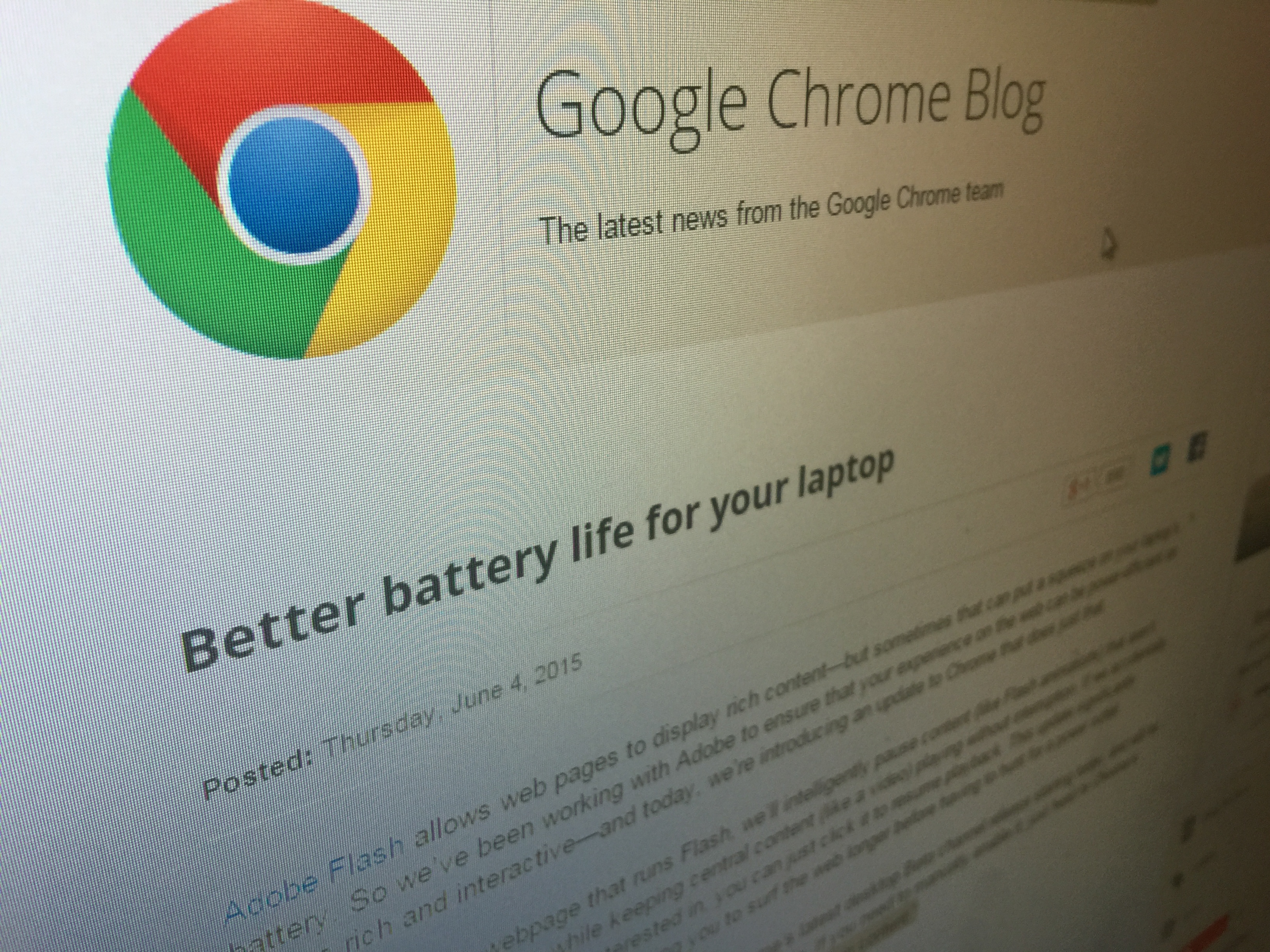Google Chrome to Block Most Flash Ads from Next Week On
Citing battery drain, Google has announced its Chrome browser will block all non-essential Adobe Flash Player content, including ads.

Adobe Flash's slow but inevitable death will be sped up, now that Google has announced that its Chrome browser will block most Flash-based content from playing automatically, beginning next Tuesday (Sept. 1).
Any Flash-based content that is deemed not "central to the webpage" and cannot be easily converted to the newer HTML5 multimedia format -- including, presumably, many ads -- will be set by default to "click to play." That setting requires the user to right-click on each piece of blocked content, then confirm his or her permission to play the content via a dropdown menu.
MORE: You Should Disable Adobe Flash Player: Here's How
On June 4, a posting on the official Google+ page for Google's AdWords ad network stated that the default Flash click-to-play feature, for which no date had yet been set, was meant to "increase page-load speed" and "reduce power consumption" on laptops.
A concurrent posting on the official Chrome blog said that Google had targeted Flash as a detriment to Web-browsing efficiency, and that the company was both working with Adobe to ameliorate the issue and introducing a feature that would only "run important plugin content.”
Unsaid was what might be Google's true motivation: Blocking Flash-based ads will make Web browsing much safer for Chrome users, as Adobe's aging multimedia platform and its associated Web browser plug-ins have in recent years been one of the more common points of entry that malware uses to infect computers.
This year's rampant rise in malvertising, in which criminal-controlled ads inject malware straight into the computers of persons unlucky enough to display the ads in their Web browsers, may have played a part in Google's decision to block Flash by default.
Sign up to get the BEST of Tom's Guide direct to your inbox.
Get instant access to breaking news, the hottest reviews, great deals and helpful tips.
Many advertisers and website owners may not be happy with this news, as Flash-based ads will not be viewed and revenue is likely to take a hit. Even ads transmitted through Google's ad networks may see a decrease in views if no HTML5 variant exists, although the company's AdWords platform is offering automatic conversion of ads so that they survive this Flash freeze.
This will likely be another major blow to Adobe Flash, as Chrome had a 27.8 percent of the worldwide browser market share in July, according to the Internet data-analysis firm NetApplications. Flash has never been supported by Apple's iOS devices, and Amazon earlier this week announced it would no longer display Flash-based ads.
Last month, both Chrome and Mozilla's Firefox browser temporarily blocked Flash following the disclosure of a major Flash vulnerability. With similar flaws being regularly found in Flash, it might be best to set your own browser to block Flash by default; the above link will show you how.

Henry is a managing editor at Tom’s Guide covering streaming media, laptops and all things Apple, reviewing devices and services for the past seven years. Prior to joining Tom's Guide, he reviewed software and hardware for TechRadar Pro, and interviewed artists for Patek Philippe International Magazine. He's also covered the wild world of professional wrestling for Cageside Seats, interviewing athletes and other industry veterans.
